ABOUT
EPSILON
What is the Epsilon?
The Epsilon is a launch vehicle that achieved an excellent price with satisfying both high reliability and operability requirements. Aiming to be the “most compact launch in the world,” Japan-Quality rockets with certainty and innovation can be used for various needs such as commercial, government and academic missions.
PRODUCT
Inheriting tradition,
Continuing to renew, Leading the world
Japanese solid rocket technology
The Epsilon, developed by IHI AEROSPACE as a Japanese national project, inherits the proven Japanese rocket technology heritage of “H-IIA” and “M-V” and realizes lower cost and higher reliability. In addition, the historic solid rocket is easier to handle than the liquid fuel rocket, so it has the advantage of keeping prices down.
Achieve a compact and flexible launch
Automatic checkout system and
Late access
The Epsilon is also innovative in terms of operation and equipment. Realized “mobile control” that completes the launch operation with only a few operators and a PC. The automatic checkout system equipment that made this possible also helps avoid human error. Introduced “late access” that can be loaded up to 3 hours before launch. It can meet a variety of needs in businesses that require flexible response, such as loading volatile special fuels and biological experiments.
Gentle Delivery for the Spacecraft to space,
World-class impact suppression
The Epsilon incorporates many technologies that take the spacecraft's environment into consideration. In addition to reducing vibration and acoustics, it has also devised ways to suppress the impact when the spacecraft is separated from the launch vehicle, thereby suppressing vibration to delicate spacecrafts and loads to the world’s top level. Not only the robustness for the load and vibration, but alto the customer will have an opportunity to allocate its important development resources to other issues.
Multiple Spacecrafts Launch
All Spacecrafts go into the target
The Epsilon can be “ride-shared”. In addition, a small liquid propulsion system (PBS: Post-Boost-Stage) is equipped on the payload mount. Traditionally, solid-propellant rockets have been difficult to place into orbit with high accuracy, but this enables delicate attitude control and allows all payloads to be place into the desired orbit with high accuracy.
LAUNCH
CAPABILITY
The Epsilon S used for launch service realizes the synergistic effects between the development results of the previous Epsilon series and the H3 launch vehicle, which is the next-generation large rocket, to achieve high reliability, high satellite operability, and low launch price.
| SPEC | Length | 27 [m] |
|---|---|---|
| Diameter | 2.6 [m] | |
| Total Mass | 99,000 [kg] | |
| Payload Envelope | D 2.1 [m] x H 2.6+ [m] | |
| Stages | 3 Solid Motors + PostBoostStage (Liquid) | |
| Capacity | Low Earth Orbit (LEO) | 1,400+ [kg] (500 [km], 31.1 [deg]) |
| Sun Synchronous Orbit (SSO) | 600+ [kg] (700 [km]) |
TYPICAL
FLIGHT PROFILE
The Epsilon is a multi-stage launch vehicle consisting of three rocket motors. After separating the first stage utilizing the technology of the SRB for H series launch vehicles, the second and third stages, which are improved from high-performance M-V launch vehicle, are ignited. Finally, the course is controlled using a liquid propulsion system called PBS, and the spacecraft is placed into desired orbit.
